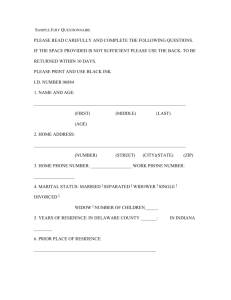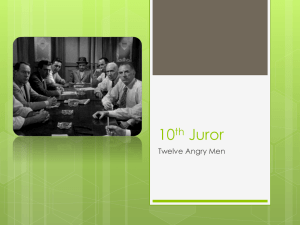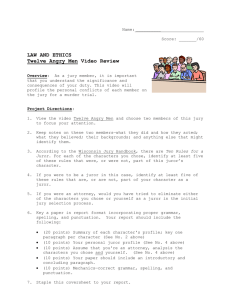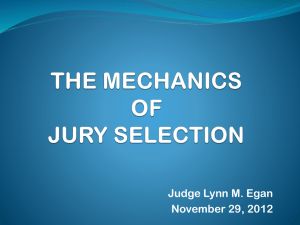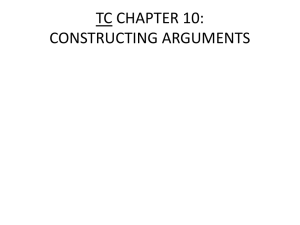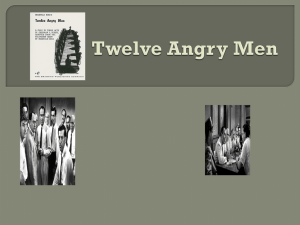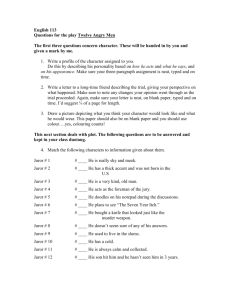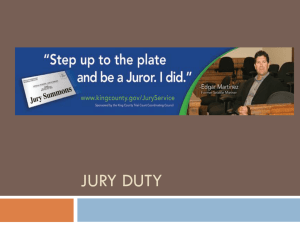Courtroom Procedure in the United States PPT
advertisement
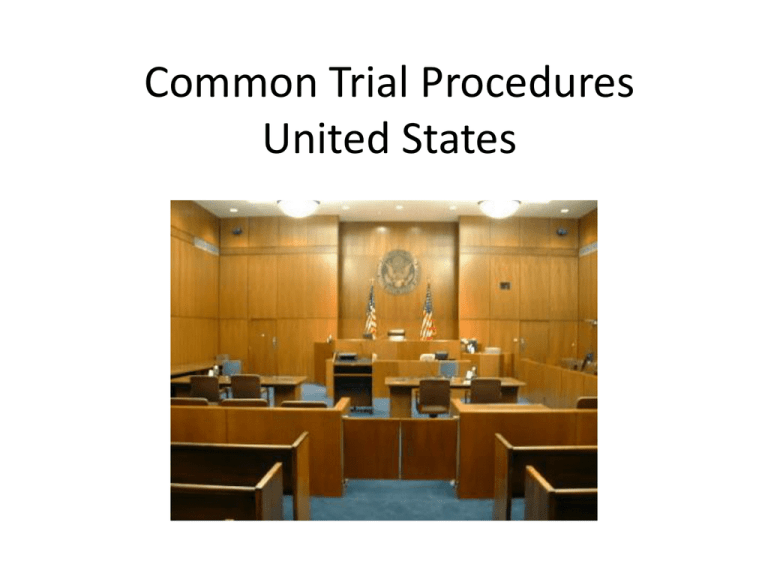
Common Trial Procedures United States Opening Statements Opening statements may be made by either or both sides in a criminal or civil trial. Neither side has to make an opening statement, but they are common. The purpose of an opening statement is to present your case and the facts that you intend to prove during the trial. They are not meant to be argumentative. The side with the burden of proof goes first. This would be the plaintiff in a civil case or the state in a criminal case. The other side may go second or wait until a later part of the trial. Rules of Evidence American courtrooms are full of rules regarding the behavior of all people present, especially attorneys. The following rules include some of the most important rules of evidence and will give you a sense of how the rules protect both sides from an unfair trail. Form of Questions A leading question is one that suggests an answer. They are not allowed on direct examination. Example of a direct question, “Mr. Smith, what were you doing on the evening of October 31st?”. Example of a leading question, “Mr. Smith, isn’t it true that you were dressed up as a ghost on October 31st? First Hand Evidence Generally speaking, witnesses must have directly seen, heard or experienced whatever it is they are testifying about. Witness Opinions As a general rule, witnesses may not give their opinions. They should confine their testimony to the facts as they saw, heard, felt, etc. Expert witnesses are allowed to give their opinions as they relate to their field of expertise. Hearsay Out-of-court statements used to prove the truth of what a witness is testifying to are usually not allowed. An example would be, “I know he had a gun, because Sharon Tomas told me he did”. Dying declarations are generally an exception. For example, “As she was dying she kept saying the word gun and her husband’s name.” Relevance Only testimony that is relevant to the case is allowed. Asking a witness to a murder if they like ice cream would be an obvious example, but sometimes lawyers may try to ask questions to prejudice the jury and make the witness look good or bad even though the question has nothing to do with the case. Introduction of Physical Evidence Physical evidence including things such as documents, weapons, or photographs, may be introduced to the court, but it must be done so in one of the following ways… • Ask the judge to mark the item, “Your honor, I ask that this item be marked as ‘Defense Exhibit A’.” • Show the item to the opposing counsel (which may object) • Ask a witness to identify an item, “Mr. Kowalski, I show you what has been marked as ‘Defense Exhibit A’. Can you please identify the item?” Impeachment An attorney may compare a witness’s statement to a statement that the same witness had already made. The attorney may point out any contradictions. The attorney does not prove that one statement is any more truthful than the other, but they do put the witnesses integrity into question. Jury Qualifications and Selection Qualifications Juror qualifications vary from county to county, and from district to district. Here are some common rules followed in Michigan. Qualification To qualify as a juror a person shall: A. Be a citizen of the United States, 18 years of age or older, and a resident of the area. B. Be able to communicate in the English language. C. Be physically and mentally able to carry out the functions of a juror. D. Not have served as a juror in a court of record during the past 12 months. E. Not have been convicted of a felony. F. A person more than 70 years of age may claim exemption from jury service. Job and School A. Your employer must allow you time off to serve on a jury. If you are harassed or fired, contact the court or the judge. B. You cannot be forced to work the second or third shift if you have spent a full day as a juror. C. High school students are exempt from service during the school year. Juror Fees A. Michigan allows payment of $12.50 for a half day and $25.00 for a full day on the first day of service; and for each subsequent day of service, $20 for a half day and $40 for a full day. B. Michigan also allows mileage of 56.5 cents per mile round trip for your jury service. C. This payment may be deducted from your job salary if your job continues to pay you during your service. D. Many employers will continue to pay you as normal, but require you to turn your jury check over to them. Jury Selection Questionnaires A. If the judge allows it, and both sides agree, a questionnaire can be given to prospective jurors either by mail or in the courtroom. This helps to begin the jury selection process. B. Both sides review the juror questionnaires to begin determining who should be selected for the jury. Challenges Both sides can challenge jurors in two ways… 1. Peremptory Challenges: A. Each side has a limited number of these challenges. When one is used, a juror is excused and the side dismissing him or her gives no reason or cause. A judge will usually approve these challenges. B. A court may require peremptory challenges to alternate between sides, or both sides may be required to give the judge the number of one juror, and the jurors will be dismissed two-at-a-time. 2. Challenges With Cause: A. After reviewing questionnaires and asking relevant questions of potential jurors, a juror may be challenged “with cause”. B. If the judge agrees, the potential juror is dismissed. Each side generally has an unlimited number of these challenges. Discrimination: Jurors may never be challenged through discrimination. This usually applies directly to race and gender. If a judge believes this may be occurring, they will not allow the challenge. Finalization: A. The process of jury selection will continue until 12 jurors are chosen. B. The judge may also exercise their own judgment in order to come to the necessary number of jurors. C. Alternate jurors (backups) may also be chosen and required to hear the case. D. Once the jury is chosen, it is “seated”.
